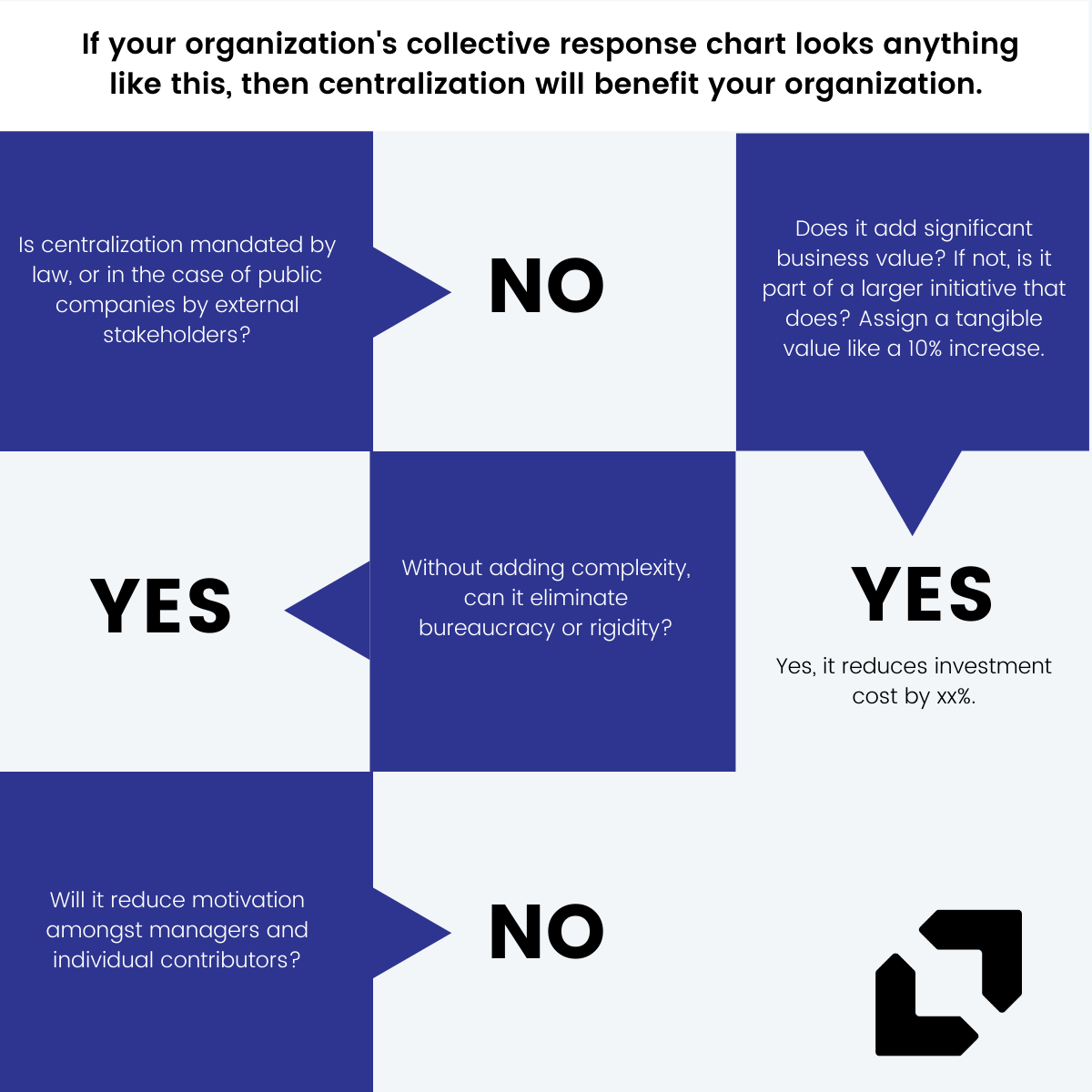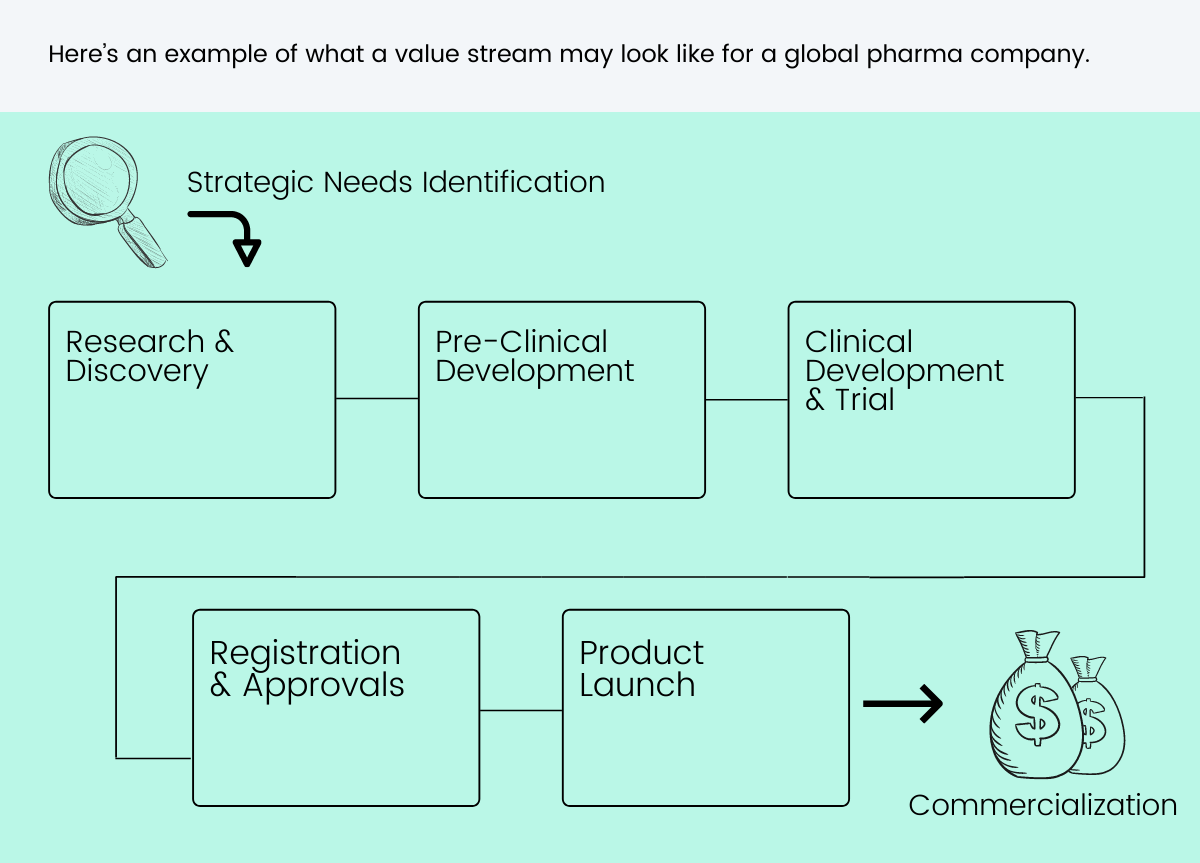Building a shared services model could play a crucial role in breaking down silos for your organization.
An operating model structured by region and drug teams is still most common among global pharma companies. On the one hand, it sets them up for agility, but on the other, it may create silos – and is a potential challenge to achieving scale.
As a business leader, deciding if centralizing tech operations is worth it is among the hardest to make. Applying centralization prompts will help you make a well-considered decision, creating alignment among regional and business unit teams. Want to know more about how to use these prompts? Keep an eye out for John Mozayani, VP Technology, AMER’s, article in CIO.com, break down silos to organize for scale. One of the key takeaways in this article is the critical questions that pharma companies need to think about when deciding for or against centralization.

This blog covers how to evaluate and redesign your tech stack to ensure that adopting a shared services model supports your efforts to organize for scale when centralizing. From identifying value streams to helping you rethink your tech strategy, let’s walk through these two approaches, value stream mapping, and domain-driven design, that may not be the norm (yet) – but have significant advantages.
Value stream mapping
A value stream is the relational and visual depiction of all the processes that create value for customers – this could reflect as a product or service. To map your value streams, start by asking yourself why your organization is in business and what types of value you deliver. Then, follow that up by considering your end products and capabilities. This approach to identification emphasizes collaboration and speed.
That is not to say that the tried and tested models of structuring by region and drug teams are antiquated – and in the wake of agile practices, we need to do away with them. Realistically, each drug that a pharma company manufactures and sells may be a value stream in itself – and the only way to know that for sure is through the identification process. After all, one company can (most likely does) have more than one value stream.

Domain-driven design (DDD)
Simply put, DDD is the practice of implementing a system architecture that is built to address a business need. In our current context, this means identifying platforms and tools that all regions need and then creating a tech stack that allows you to build once, reuse, and deploy many times. The goal is to increase ROI by reducing investment.
Now that we understand this, here’s how you can design a tech stack that shared services can evolve to grow your value streams and organize for scale.
Adopting DDD to solidify your shared services model
Let’s begin by addressing a fundamental yet essential question.
What benefit does a shared services capability bring to the table?
As the name suggests, the shared service model is the process of consolidating business operations. In the context of an organization’s tech stack, it’s identifying the capabilities teams across regions need to deliver a consistent experience.
That doesn’t mean operations like finance or project management can’t be consolidated. Our focus in this blog lies within the confines of your tech stack.
Applying the principles of the DDD approach
The three principles listed below form the core of DDD:
- Putting the focus on the core domain/value stream and its logic.
- Designing a complex tech infrastructure based on models of the value stream.
- Constantly collaborate with subject matter experts (SMEs) to improve the application model and resolve any emerging issues within the value stream.
With this approach, you follow the agile methodology and bring together tech experts and SMEs to understand the business needs. Each SME might have a challenge that impacts their team’s performance. The agile nature of this approach also allows organizations to evolve and grow consistently.
As my friend, Matt Muller (European Lead - Technology) says, “You measure the success of applying the principles of domain-driven design on whether it has made it easier for you to tackle the complexity at the heart of software development. The last principle of consistent collaboration with SMEs is critical to this. Bringing the right people to the table at the right time is the most effective way of finding tech solutions to real-world business problems.”
There are always trade-offs to centralizing, and there is no single answer or simple formula to making this decision. Before heading down the route of building a shared services capability, make sure to apply the centralization prompts to see if it is suitable for your organization.
Want to learn more about how we help the healthcare ecosystem exceed patient expectations? Click here.


